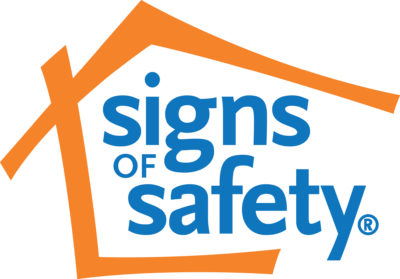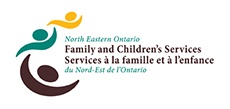
Signs of Safety: A New Practice Framework for our Child Welfare Services
Signs of Safety® is a new way of working with families when concerns about a child’s safety or well-being are brought to the attention of North Eastern Ontario Family and Children’s Services (NEOFACS).
In September 2020, NEOFACS decided to move forward with adopting the Signs of Safety approach as its practice framework for all child welfare services.
We have a multi-year transformation plan designed to embed Signs of Safety. Staff are currently participating in learning modules to increase their knowledge of the approach and put it into practice.
Our Signs of Safety implementation journey will fundamentally change how our child welfare services will work with children, youth and families.
Our Practice Principles for Signs of Safety
NEOFACS will strive to embed the Signs of Safety practice principles for partnership throughout the Agency. These principles include:
Children, youth and families are valued.
- All children, youth and families have strengths.
- Our focus is to promote the safety and well-being of children, youth and families.
- Focus on creating small changes.
- Treat all interactions as a forum for change.
- Learn what children, youth and families want.
- Offer choices.
- Always search for details
Do not confuse case details with judgement.
The Signs of Safety approach is a relationship-grounded, safety-organized approach to child protection practice, created by researching what works for professionals and families in building meaningful safety for children. The framework is recognized and implemented internationally.
This strengths-based and safety-focused approach to child protection work is grounded in partnership and collaboration. It expands the investigation of risk to encompass strengths and Signs of Safety that can be built upon to stabilize and strengthen a child’s and family’s situation.
Signs of Safety means NEOFACS will work with families, extended family, close family friends, natural supports, and other professionals so that together we can help a child feel safe and cared for.
This approach ensures the child protection worker can do everything possible to put the parents, children and everyone naturally connected to the children at the center of the assessment and decision-making.
Adopting this new practice framework supports access to service and support for families in our region while building the capacity for parents and caregivers to take greater ownership in safety planning.
Signs of Safety seeks to put the responsibility for child safety planning back with the family that the children belong to. The safety plan is co-created with the family and is owned by the caregivers and adults in their circle.
The probability of future child safety increases greatly when families and their networks understand the problems, and when they have a hand in the design and implementation of their plans. The goal is always the well-being and safety of children and youth.
Signs of Safety Tools
The Signs of Safety three-column map is a simple tool used for “mapping” the worries, strengths and required safety. The map encompasses the following domains for enquiry which involve exploring:
- What are we worried about?
- What’s working well?
- What needs to happen?
- A scaling question to make judgements about how safe the child is, from the perspective of all participants, using a progress scale of 0-10.
My Three Houses is a tool to enable the voice of the child to be expressed, heard and brought to the key adults in their life.
- It is essential to hear what children think and say when child protection services have concerns about what is happening in a child’s life.
- Using the My Three Houses tool, the worker can talk to children about the worries they have, all the good things in their lives and their hopes and dreams for the future.
The Words and Pictures stories explain what’s happened in the family to children and those important to the children. These stories describe the good times, the reasons a social worker is working with the family, the reasons children have had to live away from their immediate family, when that has happened, and who is doing what now and, in the future, to make sure the children are safe, and their needs are met.
- Created together with the parents and key adults, the tool provides a clear story that gives the children/youth an age-appropriate explanation of the problems and the seriousness of the issues that got child protection involved in the family’s life.
- Helps the parents and key adults process the past by connecting their experience of the problems with what the children need to know and creating an explanation they own.
- Creates a relationship between professionals and family where they can talk openly and in depth about the history and seriousness of the issues which in turn creates the relational foundation for developing safety planning work.
Family Safety Circles as a visual tool to help professionals explore with parents and the people they might involve in a safety network.
- The tool illustrates the power of partnership – the proverb “it takes a village to raise a child” still rings true today.
- The visual tool includes the following sections that explore issues such as: Who can be most useful? Who should know what?:
- People there’s no way we would involve.
- People we could involve if we have to.
- People we can easily involve.
- The tool is designed to be adapted to individual cases and contexts.
- This tool reminds us of the importance that a family’s network plays in safety planning.
Questions?
For more information about the implementation of the Signs of Safety framework at NEOFACS, please contact:
Carole Hart, Program Supervisor for Special Projects
Email: carole.hart@neofacs.org
Phone: 705-360-7100 ext. 5526
We invite you to share your feedback on the service and support you received.
